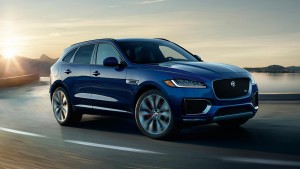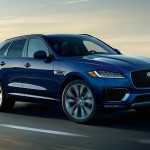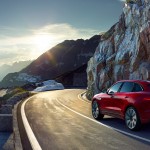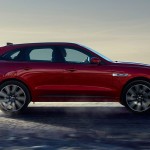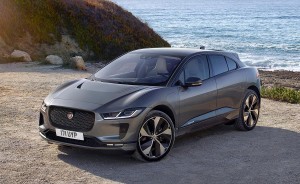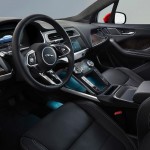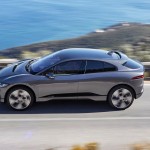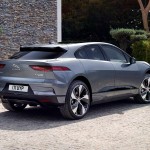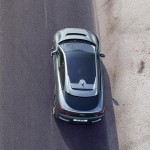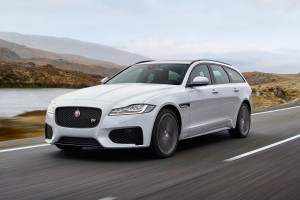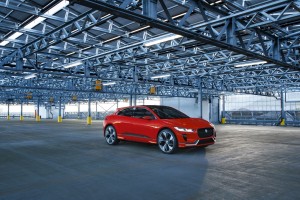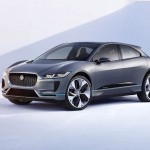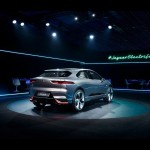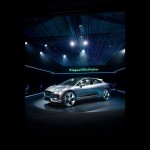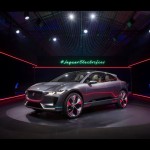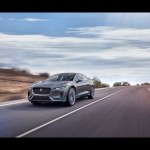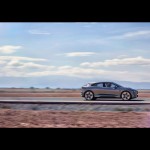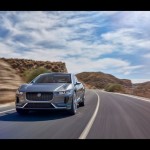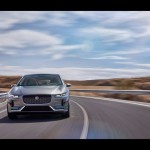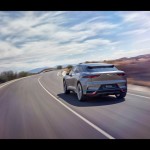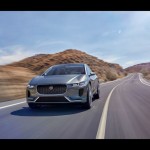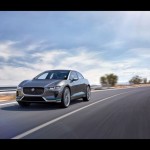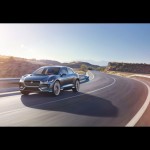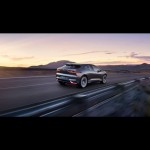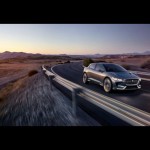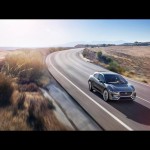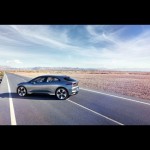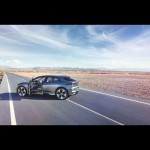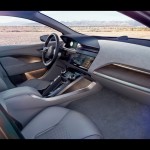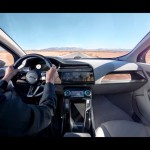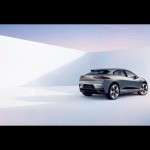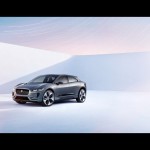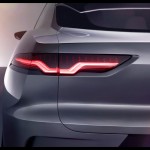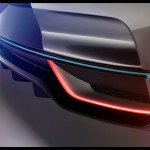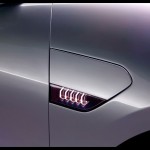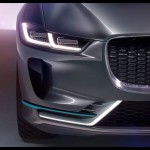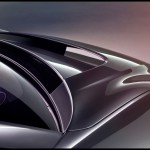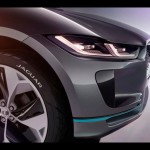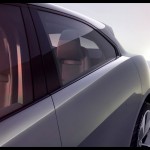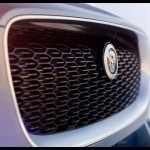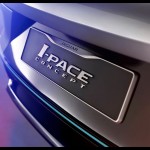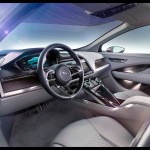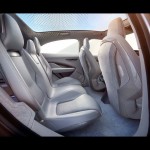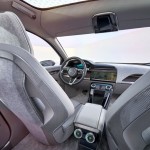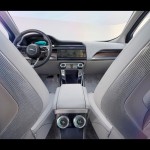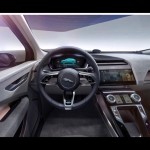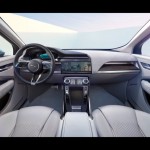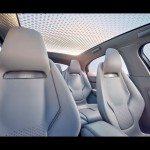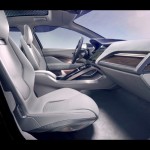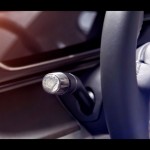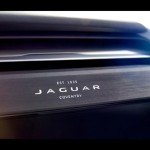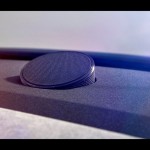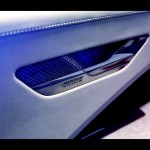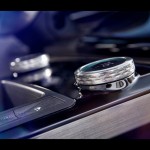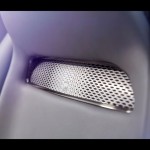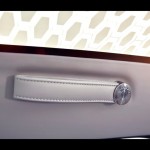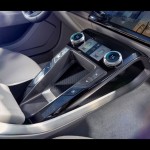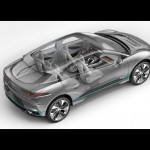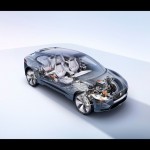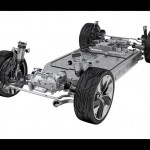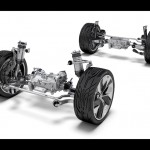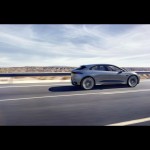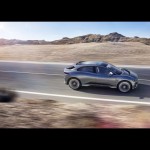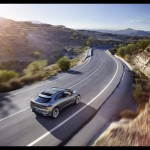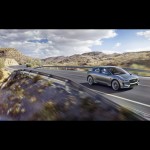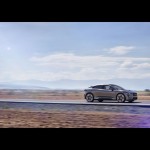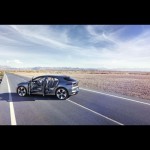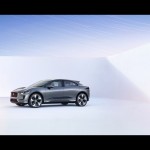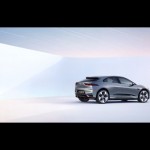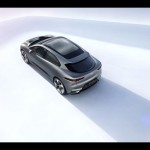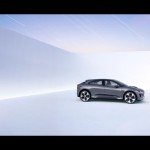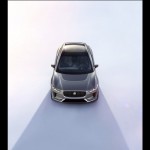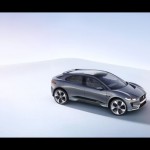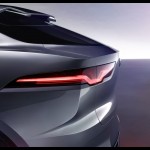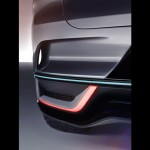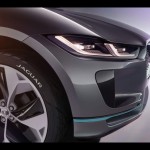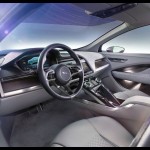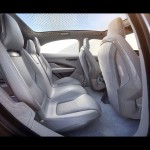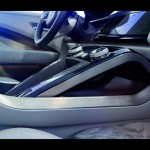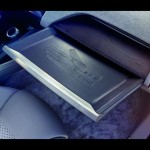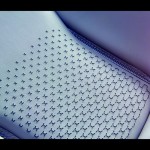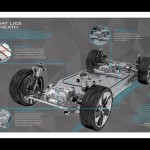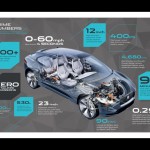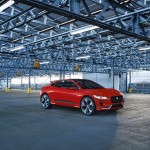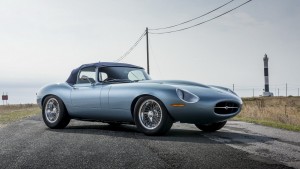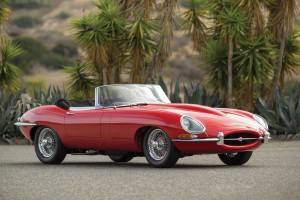Tag Archives: jaguar
Upgraded 2019 Jaguar F-Pace SUV Starts At $45,595
There are no big differences between the current Jaguar F-Pace SUV and the upgraded 2019 version even if Jaguar said the new one received several “enhancements” for the exterior. What changed though is the car’s starting price, which is now at $45,595.
Not much has changed, that we can tell you. But then again, the F-Pace was already one of the best-looking crossover SUVs out in the market, so it does not need a major makeover, really.
That being said, there are a lot of upgrades inside: the 10-inch touchscreen, lane keep assist, automatic emergency braking, and front and rear parking sensors are now standard. And like all 2019 models sold in the United States, a backup camera will now be standard.
Jaguar also added optional slimline seats and three new packages. Owners can avail of the Park Pack bundles that bring automatic parking assist with upgraded parking sensors and rear cross-traffic alert. The Drive Pack, on the other hand, includes adaptive cruise control, blind spot monitoring, and upgraded automatic emergency braking.
The Driver Assist Pack have all the features of the two packages, but also includes a surround-view camera system and lane centering.
Under the hood, the gasoline engines will come with an emissions-reducing particulate filter. The most popular engine option would still be the 2.0-liter turbocharged four-cylinder, but you can also opt for the 3.0-liter supercharged V-6 engine that was used in the 380-horsepower F-Pace S.
Us customers would be happy to know that the 2.0-liter turbodiesel will still be included. This engine can produce 180 horses and 318 pound-feet of torque. Want more power? You can opt for the F-Pace SVR, which is powered by a 5.0-liter supercharged V-8 engine that makes 550 horsepower and 502 pound-feet of torque.
Including destination fee, the new F-Pace SUV will be priced at $45,595 for the base F-Pace 25t that uses the 247-horsepower turbo-four engine. The diesel 25d will be available for $49,495. The 296-horsepower 30t is priced at $50,995 while the 380-horsepower S costs $62,495. The range-topping SVR will sell for $80,985.
Jaguar Land Rover Is Developing An All-Terrain Self-Driving Tech
Jaguar Land Rover is now developing a self-driving technology that can handle any type of terrain and weather conditions. The system will be able to identify various surface conditions and adjust the vehicle’s settings without any intervention from the driver.
The company, which is known for its off-road SUVs, first announced this system two years ago. But last week, Jaguar Land Rover revealed that it partnered with various groups, including the University of Birmingham to form the group known as CORTEX.
For the system to work, various cameras, ultrasonic, radar and LiDAR units will be used. These sensors would tell the car about the conditions of the road it is driving on. They will scan the surroundings constantly, up to 16 feet ahead at the most. But the sensors won’t only detect road situations. It would also be able to determine weather conditions—dirt, rain, ice, snow, and fog.
The data will then be analyzed and artificial intelligence will predict the potential impacts and effects of the surrounding conditions on the vehicle. Thus, the vehicle will automatically adjust its speed, steering, and even suspension.
The sensors would also be able to measure the space above and on the sides of the vehicle, a feature that would be helpful in warning the vehicle if there is insufficient clearance to maneuver. This is the same technology used in parking assistance systems.
Another type of technology that Jaguar Land Rover is developing is a kind of “platoon” system, wherein a fleet or convoy of vehicles would be able to communicate in such a way that the first vehicle on the line would send a message if it encounters a ditch or a slippery boulder.
The company has yet to announce when this technology will become available. What Jaguar Land Rover is making clear is the fact that it does not intend to take away the fun in off-road driving. The driver can take control of the vehicle anytime he/she wants. This technology is merely an aid that could guide the driver on the conditions ahead.
6 Important Things To Know About The 2018 Jaguar F-Pace SVR
Jaguar’s first SUV is getting a special treatment from JLR’s performance and customization division, the Special Vehicle Operations (SVO). The Jaguar F-Pace SVR debuted at the New York International Auto Show last week and showed tremendous potential as a sports car performance in a practical SUV design.
1. Exterior
The F-Pace grabbed both the World Car of the Year and World Car Design of the Year awards in 2017, which proved that Ian Callum is the “king” in SUV design. Callum is the same person behind the designs of the Aston Martin Vanquish, Jaguar C-X75, and the Jaguar F-Type.
The SVR model adds aggression and power to its looks, thanks to an aero package, a unique bumper, a new hood, larger fender vents, and a unique set of lightweight forged alloy wheels measuring 21 inches.
2. Interior
The F-Pace SVR has a sleek but simple interior. It starts with a quilted upholstery with the embossed SVR logo on the heavily bolstered sport seats. Top-shelf materials are used in every inch of the cabin, including the new pistol-style shifter knob, an SVR-specific steering wheel with soft-touch upholstery wrappings and aluminum paddle shifters.
3. Drivetrain
The F-Pace SVR received a huge power boost because of its supercharged 5.0-liter V-8 that can now produce 550 ponies and 502 pound-feet of torque. It has an active and lightweight exhaust system that helps power the car to 176 mph top speed. It can go 0 to 60 mph in just 4.1 seconds. The F-Pace SVR is paired with an 8-speed automatic transmission.
4. Chassis And Handling
The F-Pace SVR used the same iQ-Al modular platform as the regular F-Pace. This is the same one used on the Jaguar XE, the second-generation Jaguar XF, and the next-generation Jaguar XJ, not to mention the Range Robert Velar SUV. Thanks to this platform, the F-Pace SVR has a lightweight aluminum body that makes it easier for driver to handle it.
5. Prices
The SVR variant will start at $79,990 and orders will start this summer.
6. Competition
The main competitor of the F-Pace SVR is the Porsche Macan Turbo, which is rocking a twin-turbo V-6 that produces a whopping 400 horsepower after it has been paired with a 7-speed transmission and high-performance AWD system. The price for the Porsche starts at $77,200.
2019 Jaguar I-Pace Giving Tesla A Run For Its Money
Oh, there’s nothing much here except Jaguar revealed that its all-electric I-Pace is due to be released and distributed next year. That only means one thing: Tesla’s monopoly of the EV market is done and over. For years, whenever some rich dude wanted a cool, sexy, functional, and reliable electric vehicle, all he has to choose from are Tesla products. That’s about to change now.
If there’s anything we learned from Tesla regarding EVs it’s that an electric car must have a long driving range and the recharging of battery must be convenient. Now that luxury automakers like Jaguar dipped their well-engineered minds into the market, Tesla will have serious competitions in this market. The new 2019 Jaguar I-Pace is the first luxury EV to roll into distributorship.
Two e-Machines
According to reports, the I-Pace is going to be powered by two electric motors, or e-machines in Jaguar jargon. The first one is responsible for driving the front wheels and the second one will be driving the rear wheels through concentric drive transmissions. The I-Pace is a pure electric five-passenger luxury crossover SUV with a standard all-wheel drive.
Everything is developed in-house at Jaguar, including the permanent magnet motors, the battery concept and design, and the software that controls the powertrain and manages the battery. There’s no confirmation from the luxury automaker about the outputs for the I-Pace, but Patel confirmed that it will have an output of 400 horsepower and 516 pound-feet of torque. It will also have a range of 300 miles before a recharge is needed.
There are no details yet about the pricing, but Jaguar said that it will release the list on March 6, 2018, which isn’t really too far from where we are now. Once it goes on sale, the I-Pace will be offered in three trim levels: S, SE, and HSE. There’s, of course, a limited production First Edition version that will be priced higher than the actual production model.
Jaguar XF Sportbrake Comes At A Lower Price Tag
Those who want to own a Jaguar but cannot afford its skyrocketing price tags will have the chance through the Jaguar XF Sportbrake, which will be valued at a reasonable price of just $48,770. That’s pretty low for a car bearing the Jaguar name.
If you want the wagon counterpart, you’ll have to shell out a lot more. The wagon version will cost a whopping $71,445 since it will only come in two high-equipment trim levels. No base model for this variant, unfortunately.
In the “near future,” Jaguar Land Rover North American CEO Joe Eberhardt said that Jaguar enthusiasts can have the XF Sportback on a more reasonable price range. There are plans to produce more variants of the mid-size luxury wagon.
There are no exact details yet about the XF Sportbrake, but all we know is that the wagon will have the most powerful and expensive powertrain in the XF lineup—that’s a supercharged V-6 engine paired with an all-wheel-drive system and can power up the vehicle up to 380 horsepower.
To bring the cost down on the XF Sportbrake, Jaguar would have to use its new Ingenium turbocharged four-cylinder engine. For the sedan, the gas-powered four-cylinder will be available in two power capabilities—one producing 247 horsepower and the other churning up 296 horses.
You may also opt for a diesel engine that produces 180 horsepower on a turbocharged four-cylinder as well.
But if you’ve got the money to spare, you can wait for Jaguar’s flagship XJ and compact XE sedans. These are going to be a handful in the price department, though, since the tags are well north of $100,000 each.
The XJR575, which can produce 575 horses, will go on sale later this year for $123,395. Aside from that, the full-size luxury sedan will also have an additional 105 horsepower over the next XJ model—the XJ Supercharged. The difference will allow the XJR575 to reach 186 mph. the XJ Supercharged an only do a measly 155 mph.
5 Things To Note About The 2018 Jaguar XJR575
The Jaguar XJ has been around since 1968 and has been the luxury automaker’s prized flagship for 47 years. The current generation has been around since 2009 and got an upgrade for 2017. But for next year, the XJ will get a brand new trim level, bringing 567 horsepower to Jaguar’s most powerful road-going production so far.
1. Exterior
Aside from the black trim paint on the grille, air dam, and corner vent mesh, there’s not much update here that will separate the Jaguar XJR575 from the current generation. There’s a special XJR575 badge on the radiator grille and though it’s only a minimal update, it looks smashing just the same.
On the side, there’s a healthy dose of contrasting black on the mirrors and window trim. The wheels are 20-inch Farallon in gloss black but the real story falls behind the wheels—the brake calipers are finished in contrasting red.
There are two colors to choose from: Satin Corris Grey and Velocity Blue.
2. Interior
It’s hard for Jaguar to boost its interior styling from the already perfect XJ. There are new features here, don’t fret, such as the 10-inch touchscreen with updated software and the gloss black trim on the door handles, window switch bezels, center console trim, and HVAC vents.
On the dashboard, you’ll see the “575” badge to remind you the kind of machine you’re sitting on. Other features include the diamond-quilted seats and a 4G internet connection with hotspot capability.
3. Drivetrain
Compared to the previous XJR, the XJR575 gets 17 more horses, bringing the total to 575 horsepower and 516 pound-feet of torque. These figures are thanks in large to the 5.0-liter V-8 engine that can bring you from 0 to 62 mph in just 4.4 seconds. The top speed is 185 mph in just 44 seconds. Imagine that!
4. Pricing
Right now, we’re still not sure if the XJR575 will be available in the US. In the UK, it sells for $122,120.
5. Competition
The XJR575’s direct competitor is the BMW 7 Series’ range toppers, particularly the 750i or the M760i. The 750i comes with either a rear-wheel drive or an all-wheel drive while the M760i has all-wheel drive as standard equipment.
Top 3 Features Of The 2018 Jaguar E-Pace
The 2018 Jaguar E-Pace is smaller than the F-Pace and more keenly priced, but it did not compromise on comfort, luxury, practicality, and usability. Its design, one of the most expensive in its class, will distinguish it from the F-Pace.
D8 Architecture in Use
This compact SUV used the same D8 architecture we saw on the Land Rover Discovery Sport. The only difference is that Jaguar decided to fit the 2018 E-Pace with more on-road dynamics described only as the “Jaguar version” of the Discovery Sport.
The E-Pace, unlike the Land Rover series like the Discovery Sport and the Range Rover Evoque, won’t be produced in the Halewood facility. Instead, this will be built under license by Magna Steyr in Austria.
Land Rover’s Powertrain Borrowed
Land Rover’s turbocharged four-cylinder petrol and diesel Ingenium engines are going to be fitted in the E-Pace. That includes the range-topping 296bhp 2.0-liter petrol version that can power the E-Pace from 0 to 60mph in just 5.9 seconds. It will have a top speed of 151mph.
All of these will be paired with all-wheel drive and a nine-speed automatic transmission. The entry-level 148bhp 2.0-liter diesel model with six-speed manual gearbox will be available with a front-wheel drive system.
Sporty Interior on Point
The interior of the E-Pace will be sporty in nature. This means that the front cabin is driver focused, with a stick shifter instead of the rotary controller. Jaguar said that the interior features of the auto are all inspired by the F-Type.
Sporty interior with a spacious cabin to boot? Can you beat that? The E-Pace boasts of a raised driving position up front and a roomy kneeroom at the back that is similar to the Audi Q5 rather than the Q3. There is plenty of storage space out back too and once the rear seats have been folded, the total capacity will run to 1,234 liters.
Infotainment and connectivity features in the E-Pace will attract the younger clients. Here, you’ll find a 10-inch touchscreen, an optional widescreen TFT display, 4F WiFi hotspot for eight devices, five USB charging ports, and a wearable key option.
The E-Pace will be on sale in the UK starting in late 2017 for the price of £28,500 for the entry-level car.
Snowy Showdown Between the Porsche Macan GTS and Jaguar F-Pace S
The Porsche Macan GTS and Jaguar F-Pace S belong in the best SUVs of the world today. When it comes to mechanical specifications, the vehicles are almost alike. So what happens when the two are pitted against each other?
In one episode of Head 2 Head, Motor Trend Senior Editors Jason Cammisa and Johnny Lieberman took the SUVs for a spin in the snowy peaks of Steamboat Springs, Colorado at the famous Bridgestone Driving School.
The automotive experts got into the steering wheels of the Porsche Macan GTS and Jaguar F-Pace S to see how they fare against each other in a drag race, grocery retrieval and drifting. They also take viewers inside each SUV to provide a feel on how it is like to be a passenger and driver of each vehicle.
Quick Facts About the SUVs
Before anything else, here is a quick introduction of the Porsche Macan GTS and Jaguar F-Pace S:
2017 Porsche Macan GTS
The Porsche Macan GTS houses a 3.0-liter twin turbo V6 engine. It has an output of 360 hp with 369 lb-ft of torque. The power of the SUV goes through an all-wheel drive system with a 7-speed twin clutch automatic. The curb weight of the auto is 4,506 lb. The starting price of the unit is $68,250 but the one in the video costs $89,070.
2017 Jaguar F-Pace S
The Jaguar F-Pace S is equipped with a 3.0-liter supercharged V6 engine. It produced 380 hp with 332 lb-ft of torque. The SUV is also an AWD and the power is distributed to the wheels via an 8-speed automatic gearbox. The auto has a curb weight of 4,442 lb. The starting price of the vehicle is $57,695 but the unit in the video is worth $71,018.
The Showdown
Now watch the Porsche Macan GTS and Jaguar F-Pace S go head-to-head by playing the video below:
6 Quick Facts About the Jaguar I-Pace
The Jaguar I-Pace finally makes it to the 2017 Geneva Motor Show. Although the electric vehicle is still in its concept form, the photos and information released about it were great so far.
Check out the 6 quick facts about the new Jaguar I-Pace here based on a source:
1. Debut
The I-Pace Concept first appeared at the 2016 Los Angeles Auto Show. It marks its arrival in Europe at the 87th Geneva Motor Show.
2. Power Unit
The electric sport utility vehicle is powered by two 200hp electric motors. The power units generate a total of 400 hp and 516 lb-ft of torque. The output lets the auto accelerate from zero to 60 mph in just four seconds.
The EV is equipped with liquid-cooled 90 kWh battery with cells from LG Chem. The battery pack allows the SUV to cover a range of more or less 220 miles from a full charge.
The I-Pace also features at least 50 kWh DC fast charging with CCS Combo that takes it to 80 percent charge in just 90 minutes and full charge at around two hours. Jaguar offers an optional 7 kW home charging point too for the convenience of its customers.
3. Exterior
The Jaguar concept EV retained its look when it was introduced in LA last year. The auto resembles the shape of the Tesla Model X but with the styling elements found in the Jaguar F-Pace.
The I-Pace is 184 inches long and 74.4 inches wide. This time, the I-Pace comes in photon red paint finish similar to the image shown above.
4. Interior
The I-Pace offers a lot of space in its cabin thanks to the low positioning of its battery on the front and rear axle. The vehicle has a five-seating capacity. Again, the interior mirrors many things found in the F-Pace.
5. Tech
The notable tech features within the I-Pace include a 12-inch touchscreen, 5.5-inch touchscreen for infotainment and climate control, Wi-Fi hotspot plus improved connectivity for onboard and smartphone apps.
6. Photos
Check out the official photos of the Jaguar I-Pace in the gallery below:
2017 Eagle Spyder GT vs Jaguar E-Type Series 1
When we talk about the most beautiful cars ever created, these two will surely be at the top of the list. The Eagle Spyder GT looks very similar to the Jaguar E-Type Series 1 because the tubular, projectile form that feels like the cars can basically whip through the wind.
But these two cars don’t only look good on the outside. They are spectacularly well under the hood, too.
Eagle Spyder GT
The Eagle Spyder comes with the classic inline 6-cylinder engine derived from Jaguar’s XK family. It can carry around 4.7 liters worth of gas, and is paired with a five-speed manual transmission with a limited-slip differential.
To develop this engine, Eagle worked with Crosthwaite and Gardiner, a UK-based historic racing parts supplier. They were able to power up the Spyder GT to 330 horsepower at 4,800 rpm and 340 pound-feet of torque at 3,600 rpm. The Spyder GT can go from 0 to 60 mph in less than five seconds. Top speed is at 170 mph.
Jaguar E-Type Series 1
A lot has been said about the Jaguar E-Type Series 1, especially because it was designed by aerodynamicist Malcolm Sayer. The glass-covered headlamps and small, grille-less opening of the mile-long bonnet are things of beauty. It is such a looker that virtually everyone it passes by would have to take a second look.
Under its hood, you’ll find a 3.8-liter XK inline six-cylinder or 4.2-liter XK inline six-cylinder. The former is paired with a four-speed manual while the latter gets it on with a three-speed automatic. They can produce 265 horsepower at 5,500 rpm and 240 pound-feet of torque for the 3.8-liter engine while the 4.2-liter can power up to 265 horsepower at 5,400 rpm and 283 pound-feet of torque.
Both cars can accelerate from zero to 60 mph in just 6.5 seconds. The number is a far cry from the Spyder’s less-than-five-seconds’ promise. The top speed of the two is at 150 mph.

